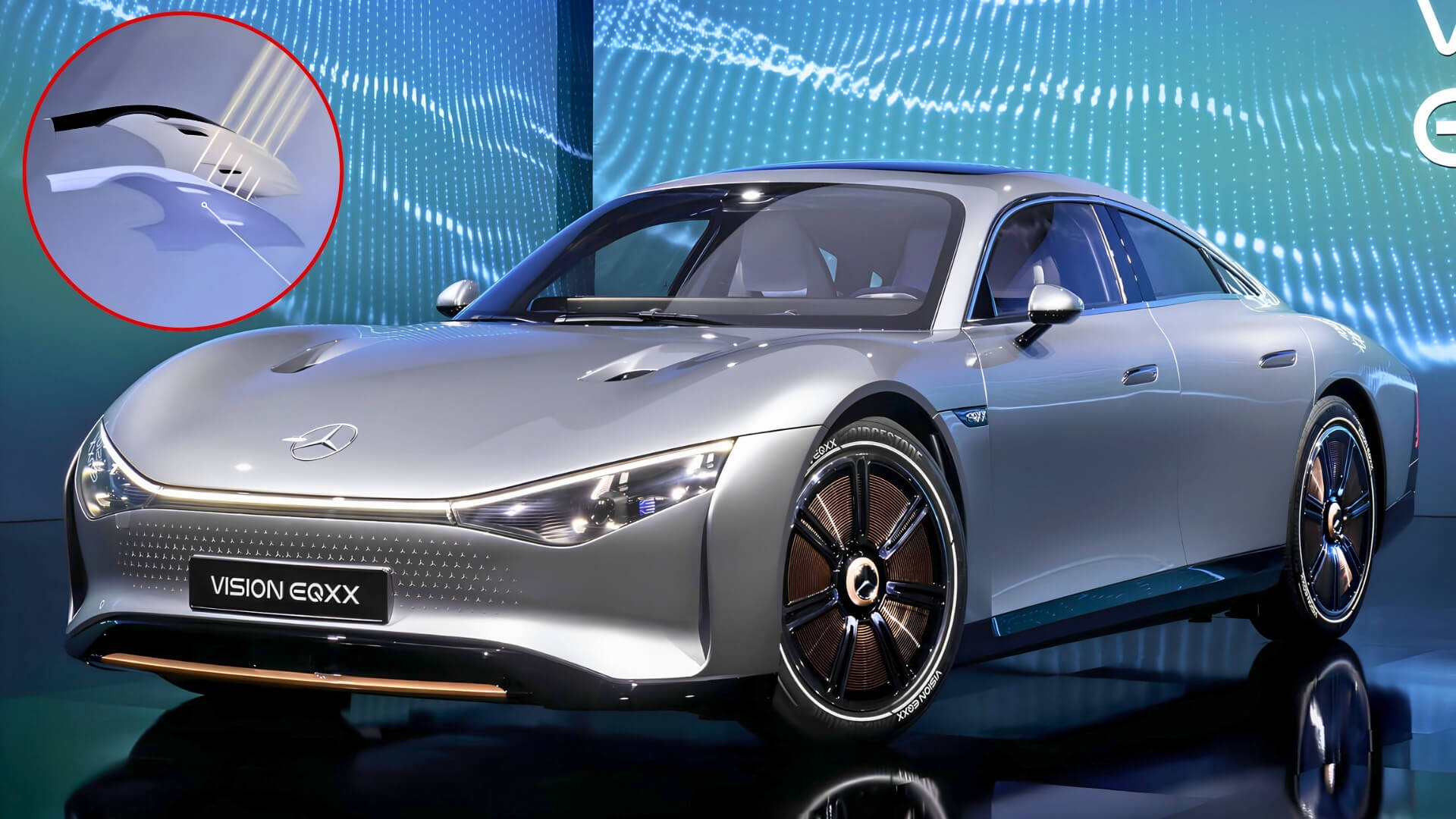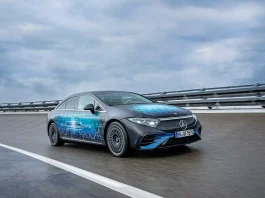Mercedes-Benz recently presented a brand new solar paint technology that aims to improve an EV’s driving range through the use of solar power. In the best-case scenario, this novel evolution could probably enable EVs to produce sufficient electrical energy for about 20,000 km (12,427 miles) of yearly driving.

The Science Behind Mercedes Solar Paint
Solar paint is a new Mercedes-Benz innovation that embeds highly efficient photovoltaic plates into the car’s body. Unlike ordinary solar panels, commonly seen on rooftops, or as accessories, this paint facilitates conversion of sunlight into electricity without needing to change the car’s appearance. These are tiny photovoltaic cells that are embedded in paint to capture sunlight and convert it to electricity that is needed to recharge the electric vehicle’s battery.
Mercedes claims that solar paint can produce enough electricity to increase the car’s range to 20,000 km yearly in case of constant sunshine. This means an average of 54 km per day—sufficient for daily travel or longer trips, particularly in sunny climates.
Key Features Mercedes Solar Paint
Thickness and Weight
The solar paint is incredibly sleek, less than the width of an average human hair at 5 micrometers or 0.0002 inches, and has a density of 50 grams per square meter. This makes it lighter than traditional solar panels and easily plug-and-play with the car’s interior design.
Efficiency
Since the efficiency of the solar modules is estimated to be 20%, this means that many of the rays of light falling on the solar panels can be efficiently transformed into usable energy.
Geographical Impact
The type and amount of energy produced differ from one place to another:
In Los Angeles, the paint could also generate enough energy to power a car for 20,000 kilometers every year. In Beijing, for example, it could help produce up to roughly 14,000 kilometers worth of the pipe.
Stuttgart, Germany, is chosen as the second reference point since the average daily distance driven is 52 km; therefore, solar power could meet around 62% of this amount.
Continuous Energy Generation
This means that the use of solar paint allows the paint to charge a high-voltage battery so that the car is dependent on conventional charging modes.This was followed by the material composition and sustainability aspect of furniture designs.
The solar paint is developed from compounds that are nonhazardous, and accessible, thus no exploitation of rare earth elements or silicon. This also as a result helps to support its sustainability since it is also reusable and cost-effective than the normal solar modules. It incorporates a nanoparticle layer, which lets up to 94% of solar radiation through to the PV coating underneath it, optimizing the captured radiation and powering the vehicle while allowing for freedom of choice on the car paint.
Reduced Range Anxiety
Since this technology can produce a large amount of energy from sunlight, there may be no problems with battery depletion during daily travels in sunny climates. The use of this technology is in support of containing carbon emissions as well as pushing the transport sector to diversify to renewable sources of energy.
Conclusion
Mercedes-Benz is currently researching this area and is considering implementing the use of this technology in future-generation EVs, in the next five to ten years. Early tests were performed on such samples as the Vision EQXX show car, which demonstrated real-world performance potential.
This approach not only demonstrates a leap forward in EV technology but also paves the way for the incorporation of renewable energy solutions into the very frames of automobiles. If successful, Mercedes-Benz’s solar paint could change how EVs are charged and greatly address their usability by ordinary people.


